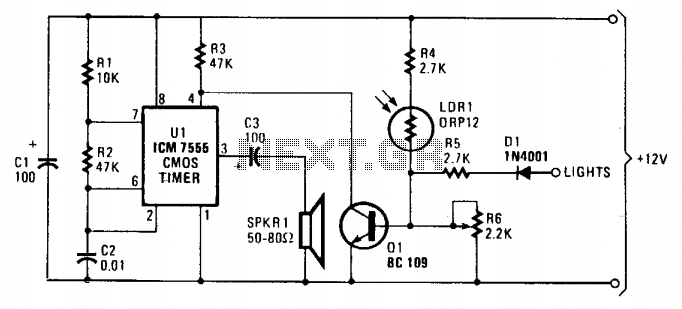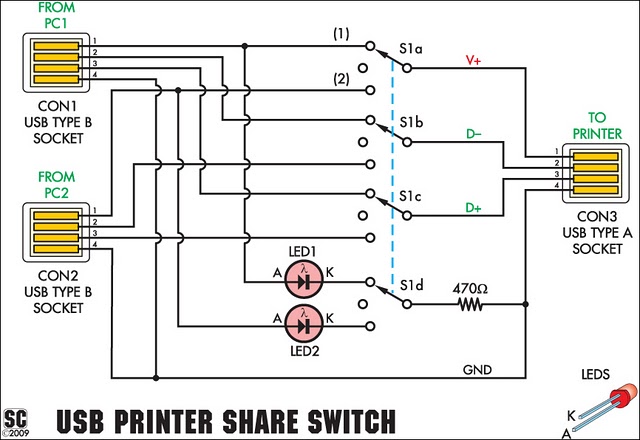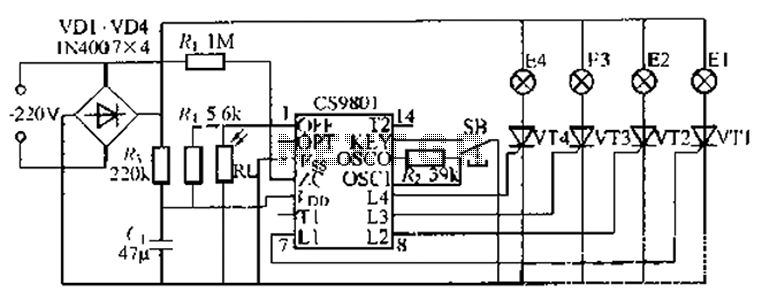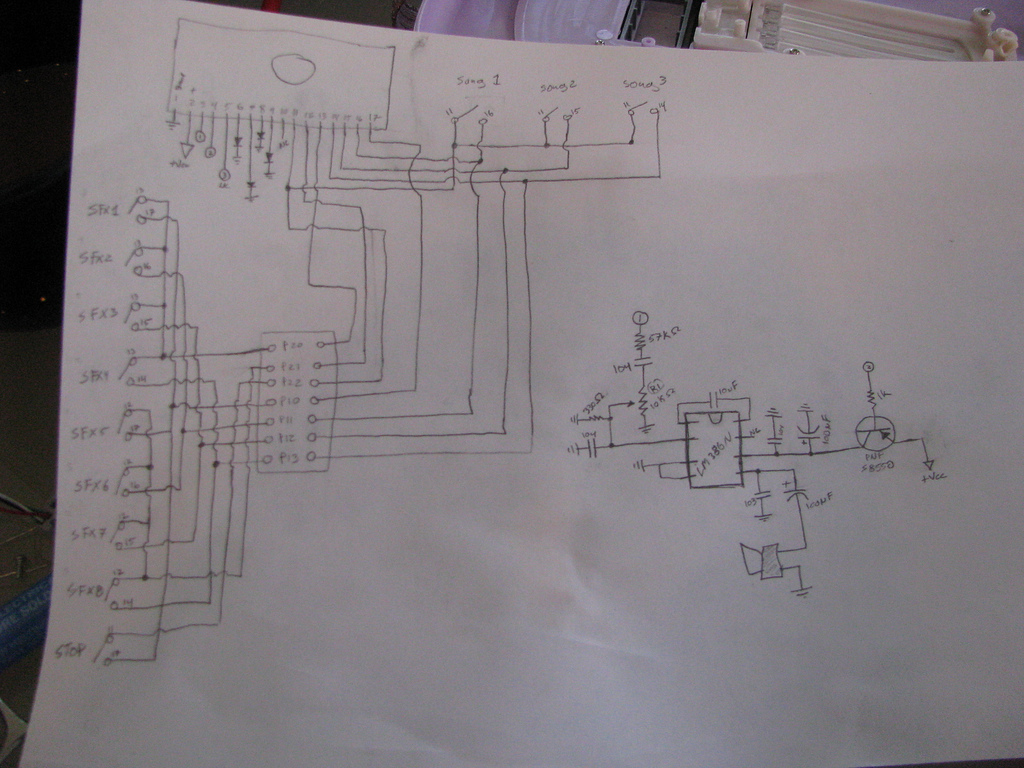
Infrared Switch Circuit

A simple infrared-controlled switch can be operated using a TV remote control. The load can be any AC-powered device connected to the relay. The load activates for three minutes before turning off and can be used to switch on a lamp in the TV room. The circuit utilizes the TSOP 1738 IR sensor module and the precision monostable/astable IC CD4538. The TSOP 1738 IR sensor receives 38 KHz infrared pulses from the remote, outputting a high signal (5 volts) when powered on. When it detects pulsed IR signals, its output becomes low. The CD4538 is a precision monostable/astable multivibrator IC that is less prone to false triggering, making it more reliable than the commonly used timer IC 555. In this circuit, the CD4538 is configured as a short-duration monostable timer using resistors R3 and capacitor C1 for timing. With the specified component values, the output of IC1 remains low for three minutes. By adjusting the values of C1 or R3, different time intervals can be achieved. Unlike the 555 IC in monostable mode, the CD4538's output is high upon power-on and transitions low when a low-to-high pulse is received at the trigger pin (pin 5). Under normal conditions, the IR sensor's output remains high, allowing transistor T1 to conduct, which keeps the trigger pin of IC1 low. When a button on the remote is pressed while pointed at the IR sensor, the output of the IR sensor goes low, turning off T1. This change makes the collector of T1 high, generating a low-to-high transition at pin 5 of IC1, triggering it and causing its output to go high. This activates transistor T2, which in turn triggers the relay. The load connected between the common and normally open (NO) contacts of the relay is powered for three minutes. A variable resistor (VR) is used to ensure that IC2 remains off in standby mode.
The infrared-controlled switch circuit is designed for ease of use and versatility in controlling AC devices. The TSOP 1738 IR sensor is capable of receiving signals from standard remote controls, making it a practical choice for home automation applications. The output behavior of the CD4538 IC, configured as a monostable timer, allows for a reliable timing mechanism that can be adjusted based on the application requirements.
The circuit components include the TSOP 1738 IR sensor, the CD4538 IC, transistors T1 and T2, a relay, and the timing components R3 and C1. The choice of R3 and C1 values directly influences the timing duration, which is critical for ensuring that the load operates for the desired period. The relay acts as a switch for the AC load, providing isolation and safe control of higher voltage devices.
In practical applications, this circuit can be utilized for various purposes, such as controlling lamps, fans, or other household appliances remotely. The simple design and use of commonly available components make it an accessible project for electronics enthusiasts and professionals alike. Proper considerations for safety and compliance with electrical standards should be taken into account when implementing this circuit in real-world scenarios.A Simple Infrared controlled Switch. It can be operated using the TV remote handset. The Load can be any AC operated device which can be connected to the relay. The load turns on for three minutes then goes off. It can be used to switch on the lamp in the TV room The circuit uses the popular IR sensor module TSOP 1738 and the precision Mono stable / Astable IC CD4538. TSOP 1738 IR sensor accepts 38 KHz infrared pulses from the remote. Its output is high at power on and gives 5 volts. When it senses pulsed IR rays, its output becomes low. CD4538 is the Precision Monostable /Astable Multivibrator IC that is free from false triggering. It is more reliable than the popular timer IC 555. Here the IC1 is wired as a short duration monostable timer using R3 and C1 as timing components. With the given values, output of IC1 remains low for three minutes. By changing the value of C1 or R3 various time intervals can be obtained. Unlike 555 IC in the monostable mode, here in CD4530, output of IC becomes high at power on and becomes low when the trigger pin5 gets a low-to-high transition pulse. Normally, the output of the IR sensor remains high and T1 conducts. This keeps the trigger pin 5 of IC1 low. When the remote handset is focused on to the IR sensor and any of the button is pressed, output of IR sensor becomes low and T1 turns off.
This makes the collector of T1 high and the low to high transition at pin 5 of IC1 triggers it and its output becomes high. T2 then turns on and relay triggers. The load connected between the common and NO contacts of the relay turns on for three minutes. Adjust VR to keep IC2 off in standby condition 🔗 External reference
The infrared-controlled switch circuit is designed for ease of use and versatility in controlling AC devices. The TSOP 1738 IR sensor is capable of receiving signals from standard remote controls, making it a practical choice for home automation applications. The output behavior of the CD4538 IC, configured as a monostable timer, allows for a reliable timing mechanism that can be adjusted based on the application requirements.
The circuit components include the TSOP 1738 IR sensor, the CD4538 IC, transistors T1 and T2, a relay, and the timing components R3 and C1. The choice of R3 and C1 values directly influences the timing duration, which is critical for ensuring that the load operates for the desired period. The relay acts as a switch for the AC load, providing isolation and safe control of higher voltage devices.
In practical applications, this circuit can be utilized for various purposes, such as controlling lamps, fans, or other household appliances remotely. The simple design and use of commonly available components make it an accessible project for electronics enthusiasts and professionals alike. Proper considerations for safety and compliance with electrical standards should be taken into account when implementing this circuit in real-world scenarios.A Simple Infrared controlled Switch. It can be operated using the TV remote handset. The Load can be any AC operated device which can be connected to the relay. The load turns on for three minutes then goes off. It can be used to switch on the lamp in the TV room The circuit uses the popular IR sensor module TSOP 1738 and the precision Mono stable / Astable IC CD4538. TSOP 1738 IR sensor accepts 38 KHz infrared pulses from the remote. Its output is high at power on and gives 5 volts. When it senses pulsed IR rays, its output becomes low. CD4538 is the Precision Monostable /Astable Multivibrator IC that is free from false triggering. It is more reliable than the popular timer IC 555. Here the IC1 is wired as a short duration monostable timer using R3 and C1 as timing components. With the given values, output of IC1 remains low for three minutes. By changing the value of C1 or R3 various time intervals can be obtained. Unlike 555 IC in the monostable mode, here in CD4530, output of IC becomes high at power on and becomes low when the trigger pin5 gets a low-to-high transition pulse. Normally, the output of the IR sensor remains high and T1 conducts. This keeps the trigger pin 5 of IC1 low. When the remote handset is focused on to the IR sensor and any of the button is pressed, output of IR sensor becomes low and T1 turns off.
This makes the collector of T1 high and the low to high transition at pin 5 of IC1 triggers it and its output becomes high. T2 then turns on and relay triggers. The load connected between the common and NO contacts of the relay turns on for three minutes. Adjust VR to keep IC2 off in standby condition 🔗 External reference





